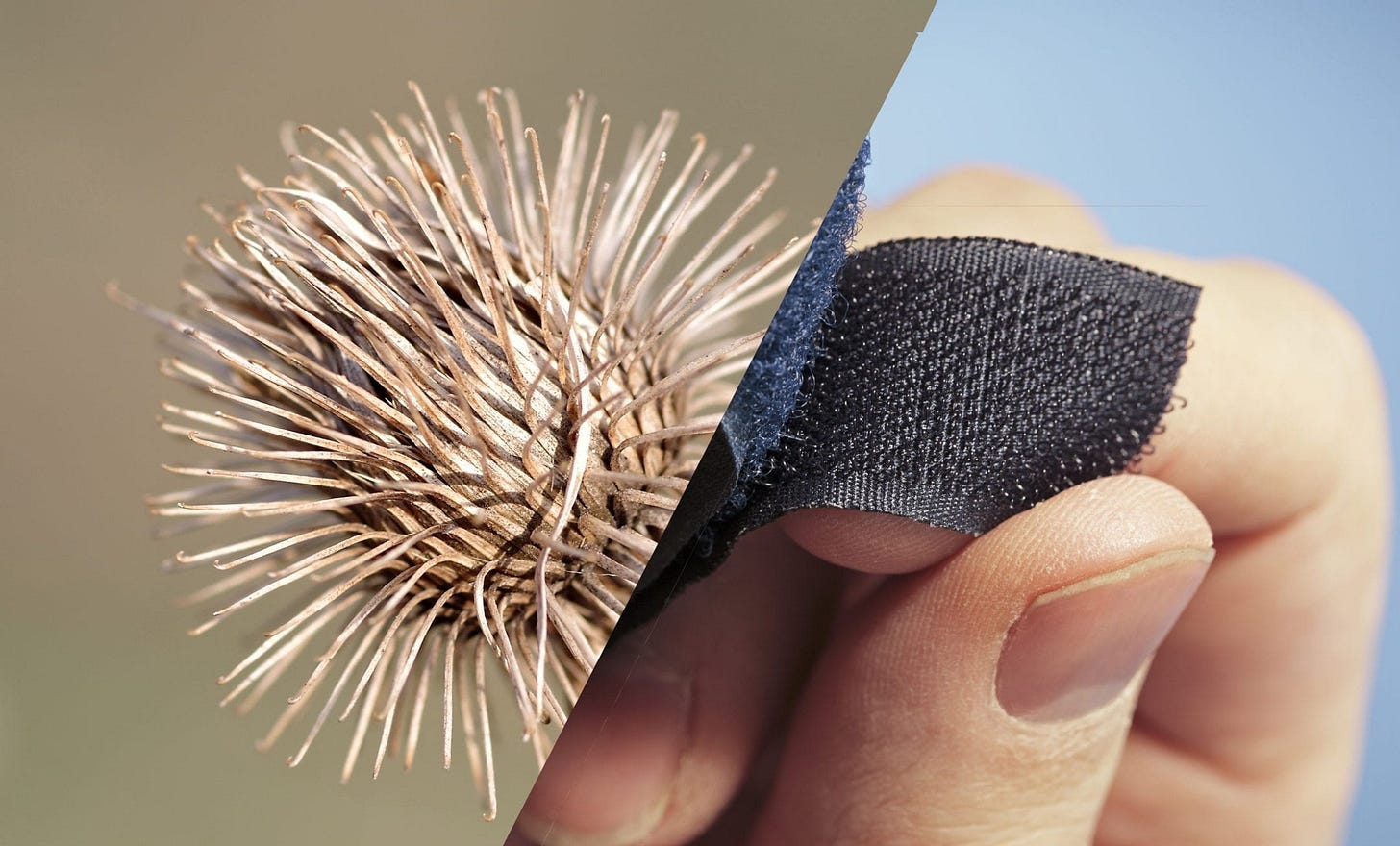Biomimicry: Learning from Nature’s Blueprint
Picture a train slicing smoothly through Japan’s countryside, barely disturbing the air around it. It’s not shaped by human aesthetics but by the sleek beak of a kingfisher, adapted over millennia to cut into water without a splash. This is biomimicry—a groundbreaking approach where scientists, engineers, and designers turn to nature for innovative solutions to human challenges. Rooted in the idea that natural evolution has optimized countless biological systems to survive, thrive, and adapt, biomimicry invites us to replicate this efficiency and resilience in human-made designs.
One of the most famous examples of biomimicry is the invention of Velcro. Swiss engineer George de Mestral noticed how burdock burrs clung stubbornly to his dog’s fur—an annoyance to most, but a spark of inspiration for him. Examining the burrs under a microscope, he saw tiny hooks that latched onto the loops of the fur, leading him to invent Velcro, a fastener now used worldwide, from toddler shoes to NASA spacesuits. This everyday item highlights biomimicry’s essence: that paying close attention to natural structures can inspire practical, durable, and even revolutionary technologies.
In architecture and urban planning, designers aim to create energy-efficient, sustainable buildings by imitating natural ecosystems. A stunning example is Zimbabwe’s Eastgate Centre, a large office complex with an innovative cooling system inspired by termite mounds. Termites construct elaborate ventilation systems to keep their homes stable even in extreme climates. The Eastgate Centre’s passive cooling, modeled after this natural system, uses 90% less energy than a conventional building of similar size for air conditioning. It’s a powerful reminder of nature’s efficiency, showing that the planet’s most successful architects have been insects all along.
Biomimicry also extends to medicine and material sciences, where researchers look to nature for breakthroughs. Shark skin, for instance, has unique antibacterial properties that help sharks avoid infections in the wild. Inspired by this, scientists are developing hospital surfaces that naturally resist bacterial growth, reducing the spread of infections. Similarly, the sticky properties of gecko feet—allowing them to climb smooth surfaces effortlessly—are being studied for medical adhesives. Such innovations aren’t just ingenious but also sustainable, as they use non-toxic materials designed to work harmoniously with the human body and the environment. Imagine a future where medical technologies adapt as seamlessly to their environments as the creatures that inspired them.
Yet, biomimicry isn’t always straightforward. While nature’s designs have been refined over billions of years, replicating them in human technology can be complex, costly, and difficult to scale. Even so, the potential rewards push researchers forward, continually testing and refining their approaches to make nature-inspired designs feasible on a large scale.
In an era of environmental crisis, biomimicry offers a pathway to sustainable innovation by reconnecting humanity with the wisdom of the natural world. This approach encourages us to view nature not as something to conquer but as a mentor and model. Biomimicry’s growing presence in fields from technology to healthcare represents a shift toward eco-conscious solutions that respect and preserve the ecosystems that inspire them. As we look to the future, one question looms: If nature has been designing for billions of years, what might we learn next from our oldest teacher?


